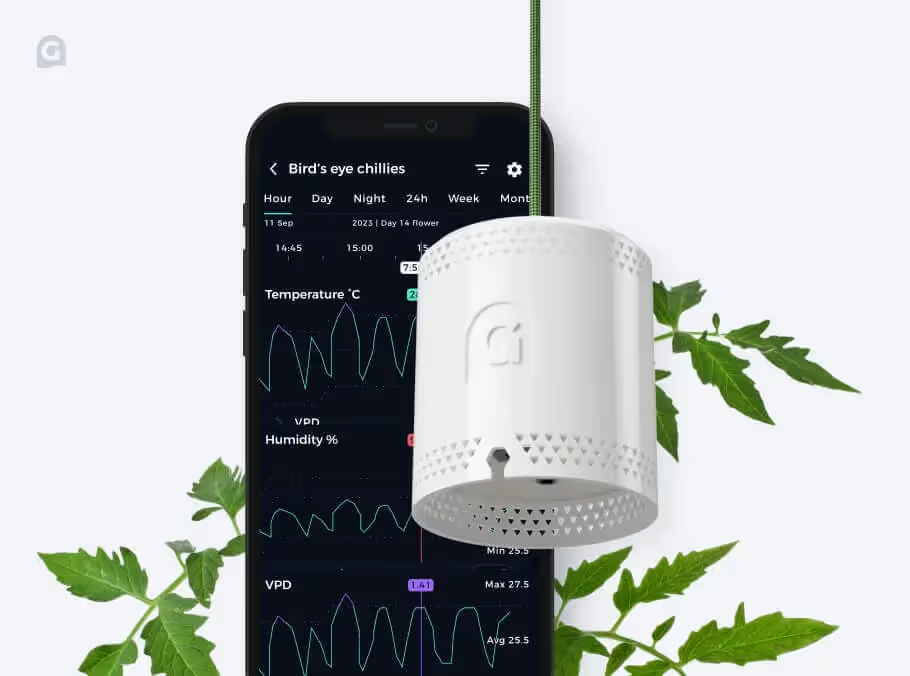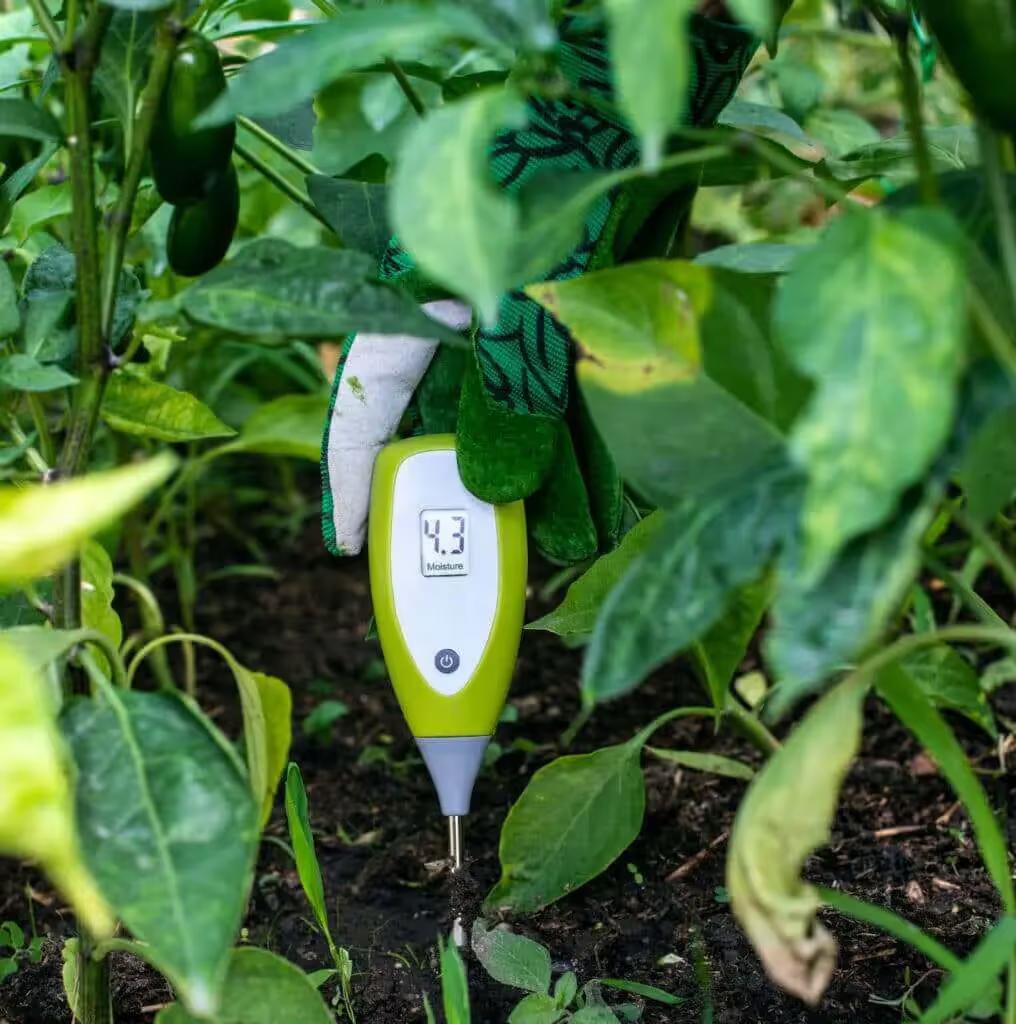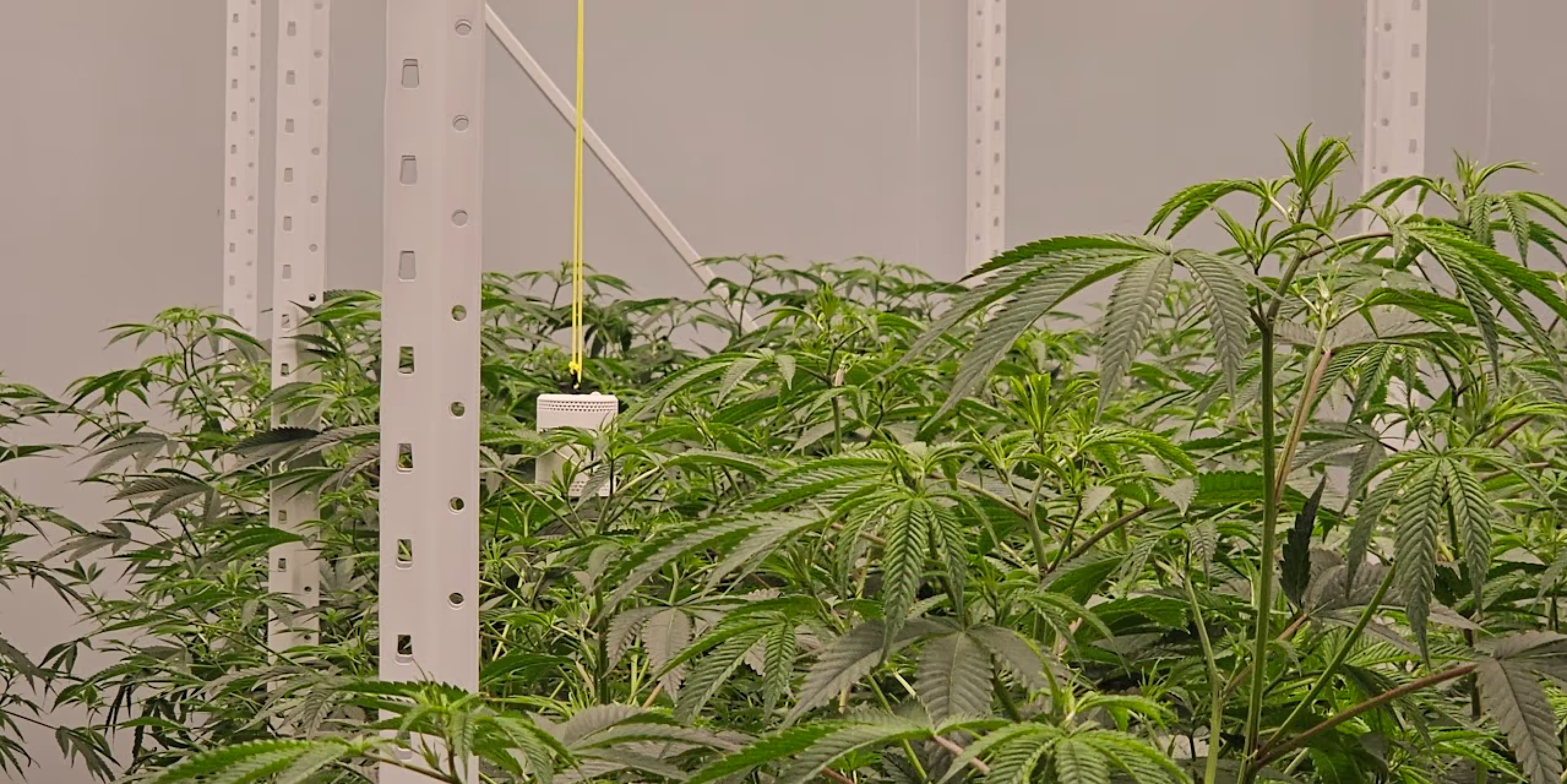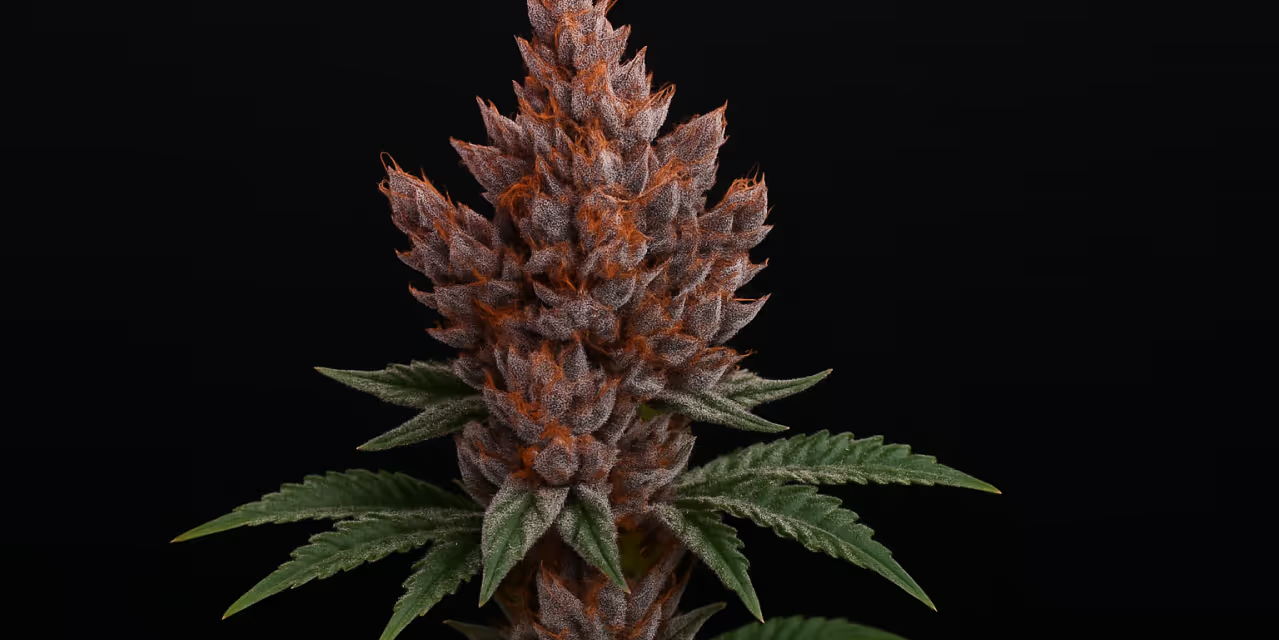Mastering vapour pressure formula: essential guide

.avif)
Are you ready to dive into vapour pressure formula?
If you're looking to take your cannabis cultivation skills to the next level, understanding vapour pressure is an absolute game-changer.
Picture this: a lush green canopy of cannabis plants thriving under your care, with buds bursting with potency and flavour. Sounds like a dream, right? Well, mastering vapour pressure formula is the secret ingredient that can make it a reality.
Now, you might be wondering, "What exactly is vapour pressure, and why is it so important for my precious plants?" Don't worry, my friend! In this detailed guide, we'll break it down for you in the most relatable way possible. We'll explore the ins and outs of vapour pressure and demystify the formula behind it.
But hold on a second. Before we go any further, let's take a moment to appreciate the impact of temperature on our plants' well-being. Just like we humans have our comfort zones, cannabis plants have their own temperature preferences.
Imagine trying to thrive in an icy tundra or a scorching desert – not exactly ideal, right? Well, temperature plays a crucial role in vapour pressure. By understanding this dynamic relationship, we can create the perfect growing environment for your plants to flourish.
Disclaimer: Any information given on this site is for educational purposes only. Please ensure if you’re growing cannabis you’re doing so in accordance with the law and subject to appropriate permissions and licenses of the applicable country.
Understanding vapour pressure
Alright, let's get down to the nitty-gritty of vapour pressure. So, what exactly is this vapour pressure thing and why does it matter to our beloved cannabis plants? Well, think of it as the measure of how eager water molecules are to escape into the air and become vapour.
You see, as the temperature rises, the energy within water molecules increases, making them more active. This increased activity prompts some of the water molecules to break free from the liquid state and transform into vapour. Vapour pressure is essentially the force exerted by these escaping water molecules, and it's crucial for plant health.
Now, you might be thinking, "Why should I care about water molecules turning into vapour?" Great question! Vapour pressure directly affects the rate of water loss from our plants through a process called transpiration.
When the vapour pressure of the air surrounding the leaves is higher than the vapour pressure inside the leaves, moisture is drawn out of the plant, causing transpiration. This process is vital for nutrient uptake and overall plant functioning.
Here's a relatable analogy for you: imagine being stuck in a crowded room with limited air circulation. If you are starting to perspire, the humid environment makes it difficult for your sweat to evaporate and cool you down. The same goes for our plants!
If the vapour pressure surrounding their leaves is too high, it becomes challenging for them to release excess moisture. This can lead to potential problems like wilting, nutrient deficiencies, and even mould growth. We definitely don't want that!
Conversely, if the vapour pressure in the grow room is too low, our plants can become dehydrated as water evaporates too quickly from their leaves. Like being stranded in a desert without a drop of water in sight – a true survival nightmare! That's why striking the right balance in vapour pressure is crucial for maintaining optimal plant health.
So, now that we've got a grasp on the importance of vapour pressure, let's dive into the formula behind it. We'll break it down step by step and make sure you gain the knowledge to calculate and control vapour pressure like a pro.

The vapour pressure formula demystified
The vapour pressure formula revolves around one key concept: the relationship between temperature and vapour pressure. It goes like this:
Vapour Pressure = Constant x Temperature
Now, let's take a closer look at each component of the formula.
Vapour pressure:
This is the variable we're trying to calculate. Vapour pressure represents the force exerted by water vapour in the air, indicating the likelihood of water molecules transitioning from liquid to vapour form. It's usually measured in units of pressure, such as millibars or kilopascals.
Constant:
The constant in the formula is specific to water and depends on the unit of temperature used. For our purposes, we'll use the Celsius scale. The constant is typically denoted as "C" and has a value of 0.611.
Temperature:
Temperature plays a pivotal role in determining vapour pressure. It's measured in degrees Celsius (°C) and represents the average kinetic energy of water molecules. As temperature increases, so does the energy within the molecules. This leads to more water molecules transitioning into vapour form and higher vapour pressure.
To calculate the vapour pressure, simply multiply the constant (C) by the temperature (T) in Celsius:
Vapour Pressure (in millibars) = C x T
For example, if the temperature in your grow room is 25°C, you can calculate the vapour pressure by substituting the values into the formula:
Vapour Pressure = 0.611 x 25
Vapour Pressure ≈ 15.28 millibars
See? It's not as daunting as it initially seems! By plugging in the temperature, you can calculate the corresponding vapour pressure.
Remember, the vapour pressure formula provides a general approximation. Actual vapour pressure can be influenced by additional factors such as humidity, air circulation, and the presence of other gases. However, understanding this fundamental relationship between temperature and vapour pressure will empower you to make informed decisions in your grow room.

Factors affecting vapour pressure in cannabis growth
Now that we've grasped the basics of the vapour pressure formula, let's look into the factors that can influence vapour pressure. Understanding these factors will empower you to create the ideal environment for your plants to thrive. Let's explore them in detail:
Humidity levels:
Humidity is a major player in relation to vapour pressure. It refers to the amount of moisture present in the air. As humidity increases, the vapour pressure also rises.
This means that if your grow room has high humidity levels, the vapour pressure surrounding your plants will be higher. This potentially leads to issues like excessive transpiration and excessive nutrient uptake.
On the other hand, low humidity levels can result in low vapour pressure, leading to dehydration and reduced growth. Striking the right balance is key!
Temperature fluctuations:
Temperature fluctuations can significantly impact vapour pressure. As the temperature rises, the vapour pressure increases, which can enhance transpiration rates. Conversely, cooler temperatures can reduce vapour pressure. It's essential to maintain stable temperatures within the optimal range for your plants' growth stage to ensure consistent vapour pressure conditions.
Air circulation:
Adequate air circulation is vital for maintaining optimal vapour pressure. When air circulates effectively around your plants, it helps to dissipate excess moisture and promote healthy transpiration. Insufficient air movement can lead to stagnant conditions, elevated humidity levels, and uneven vapour pressure distribution. Consider implementing fans or other ventilation systems to promote proper air circulation.
Carbon dioxide (CO2) Levels:
CO2 levels can indirectly affect vapour pressure by influencing plant physiology. Higher levels of CO2 can enhance plant growth and metabolism, potentially increasing transpiration rates and impacting vapour pressure. Monitoring and maintaining appropriate CO2 levels in your grow room can help to achieve optimal vapour pressure and overall plant health.
Plant density:
The density of your cannabis plants can influence vapour pressure conditions. When plants are closely spaced, the microclimate between them can become more humid because of the reduced air movement. This can lead to localised variations in vapour pressure. Proper plant spacing and canopy management techniques can help ensure adequate airflow and maintain consistent vapour pressure across your growth space.
By paying attention to these factors and making adjustments as necessary, you can fine-tune your grow room environment. Remember, finding the sweet spot in vapour pressure is essential for healthy plant growth, nutrient absorption, and overall crop success.
Improve your harvest – join the Grow The Best newsletter today!

Utilising vapour pressure to optimise cannabis growth
Now that we understand the factors influencing vapour pressure, it's time to put that knowledge to work. Let's explore how you can leverage vapour pressure in each stage of growth.
Seedling stage:
During the seedling stage, your little cannabis babies are delicate and require careful attention. Aim for a slightly higher vapour pressure to maintain a humid environment and promote healthy germination and root development. A vapour pressure range of around 15-20 millibars is ideal. You can achieve this by adjusting humidity levels and ensuring gentle air movement around the seedlings.
Vegetative stage:
As your plant's transition to the vegetative stage, they'll start developing strong roots and lush foliage. Maintain a balanced vapour pressure of around 20-25 millibars to support healthy transpiration, nutrient uptake, and robust vegetative growth. Keep a close eye on humidity levels and temperature to achieve this optimal range.
Flowering stage:
Ah, the flowering stage – the time when your cannabis plants start producing those precious buds. During this critical phase, it's crucial to maintain the right vapour pressure to ensure bud development and resin production.
Aim for a slightly lower vapour pressure of around 15-20 millibars. This will help to prevent excess humidity that can lead to bud rot or mould. This lower vapour pressure also encourages the plants to focus their energy on flower production.
Remember, these are general guidelines, and different cannabis strains may have specific preferences. Always monitor your plants closely and make adjustments based on their individual needs and responses.
But hold on! How do you actually measure and adjust vapour pressure? Well, my friend, there are handy tools and techniques available to help you out. Let's explore a few of them:

Grow Sensor:
For an all-singing, all-dancing solution to the task of measuring vapour pressure, you’ll want to equip yourself with a Grow Sensor. This smart monitoring tool will work quietly in the background of your grow space. It will measure and monitor all sorts of environmental conditions. The live and accurate data produced will allow you to make informed decisions about which steps to take next.

Hygrometers:
Hygrometers are devices that measure humidity levels in the air. Invest in a reliable hygrometer to accurately monitor the humidity in your grow room. This will help you gauge the vapour pressure and make informed adjustments as needed.
Better yet, equip yourself with a digital thermo-hygrometer. This will provide real-time readings, allowing you to keep a close eye on vapour pressure. Place the thermo-hygrometer at the plant canopy level to ensure accurate measurements. This information will guide your decisions when adjusting environmental conditions.
Dehumidifiers and humidifiers:
These devices are your best friends for managing humidity levels. Particularly in regions with high ambient humidity and temperature. If the vapour pressure is too high, a dehumidifier can help remove excess moisture from the air. On the other hand, if the vapour pressure is too low, a humidifier can add moisture and elevate humidity levels.
Ventilation
Proper ventilation plays a vital role in maintaining optimal vapour pressure. To maintain proper air circulation and control vapour pressure, consider installing exhaust fans and intake systems.
Exhaust fans help remove stale air and excess moisture, promoting fresh air exchange. Intake systems bring in fresh air, ensuring a constant supply for your plants. By balancing the airflow, you can manage vapour pressure more effectively.
Carbon dioxide (CO2) injection:
If you're looking to boost plant growth and potentially influence vapour pressure, CO2 injection systems can be beneficial. These systems provide an additional supply of CO2 to the grow room, enhancing photosynthesis and promoting healthy transpiration. By increasing CO2 levels, you can fine-tune the vapour pressure environment for optimal plant growth.
Reflective surfaces:
Reflective surfaces, such as Mylar or white paint, can significantly improve light distribution in your grow room. By reflecting more light onto your plants, you encourage robust growth and transpiration, indirectly impacting vapour pressure. Ensure that your plants receive uniform lighting to maintain consistent vapour pressure conditions.
Canopy management techniques:
Proper canopy management plays a crucial role in vapour pressure control. Pruning lower foliage and maintaining an open canopy allow for better airflow and light penetration. This helps prevent humidity pockets and ensures that vapour pressure is evenly distributed throughout the grow space.
Remember, these tools and techniques are meant to support your efforts in maintaining optimal vapour pressure conditions. Consider your specific needs, grow room setup, and budget when selecting the resources that best suit your cultivation style.
Takeaways
Congratulations, my fellow growers! We've covered a lot of ground on our journey to master the vapour pressure formula and optimise cannabis growth. You've learned about the importance of vapour pressure and understood the formula behind it. We also explored the factors that influence vapour pressure in your grow room.
Armed with this knowledge, you're well on your way to creating the perfect environment for your cannabis plants to thrive.
Remember, maintaining the right vapour pressure is crucial for healthy plant development, nutrient absorption, and overall crop success. By understanding the interplay between temperature, humidity, airflow, and other factors, you can fine-tune your cultivation environment. This enables you to provide the best possible conditions for your plants.
Now, as you embark on your cannabis-growing journey, keep in mind that troubleshooting and adaptation are key. Monitor your plants closely, address any issues with humidity, temperature, or airflow promptly, and make adjustments based on their responses. Remember, every grow room is unique, and finding the ideal vapour pressure conditions may require some trial and error.
Before we part ways, let's recap the key points covered:
- Vapour pressure is the measure of water molecules transitioning from liquid to vapour form.
- The vapour pressure formula is Vapour Pressure = Constant * Temperature.
- Factors affecting vapour pressure include humidity levels, temperature fluctuations, air circulation, CO2 levels, and plant density.
- Utilise tools such as digital thermo-hygrometers, exhaust fans, air conditioners, and reflective surfaces for vapour pressure management.
- Avoid common mistakes like neglecting humidity control or poor air circulation.
- Troubleshoot issues by adjusting humidity, temperature, or airflow based on plant signals.
Now it's your turn! Apply your newfound knowledge, experiment, and fine-tune your vapour pressure management techniques. This will help you to create the perfect environment for your cannabis plants to flourish. Remember, patience, observation, and adaptability are key to becoming a master grower.








.avif)








